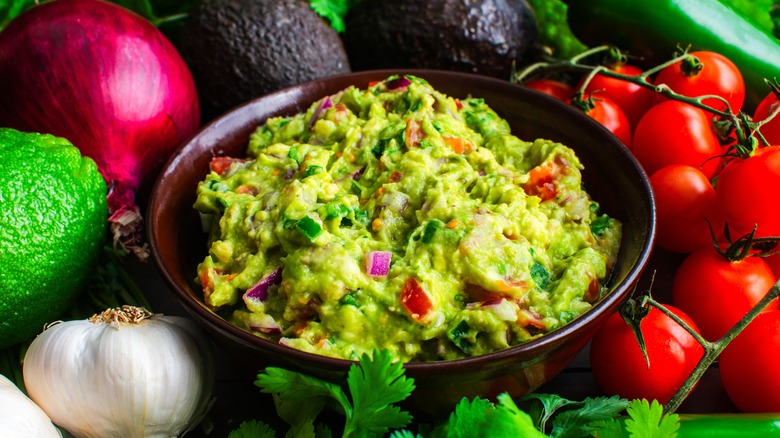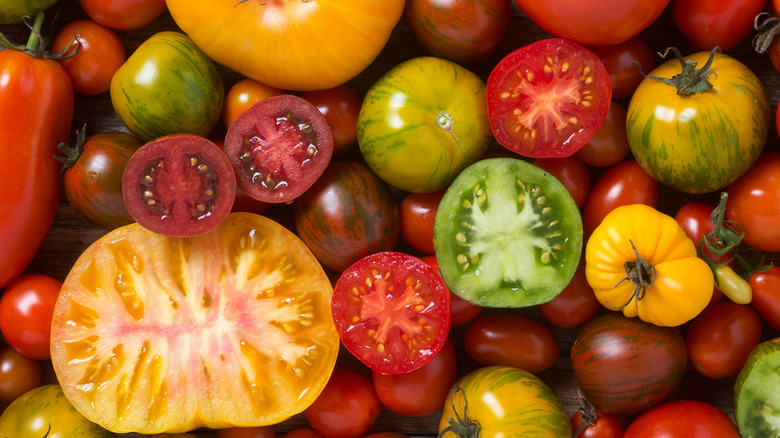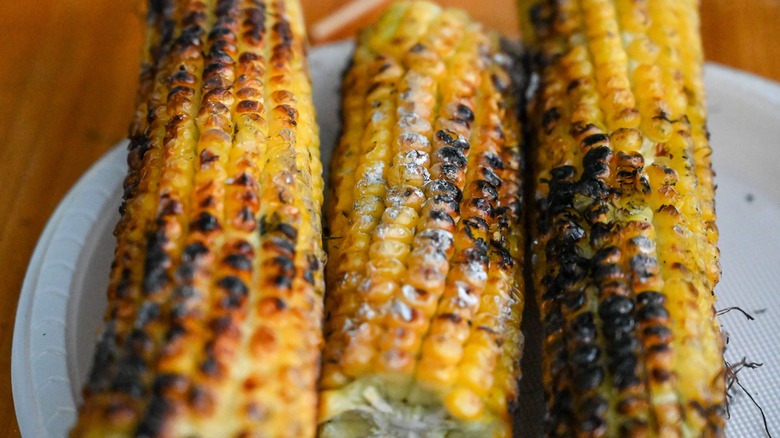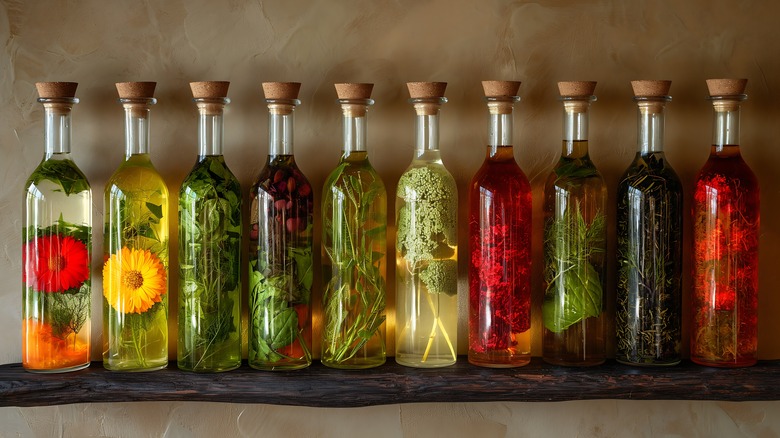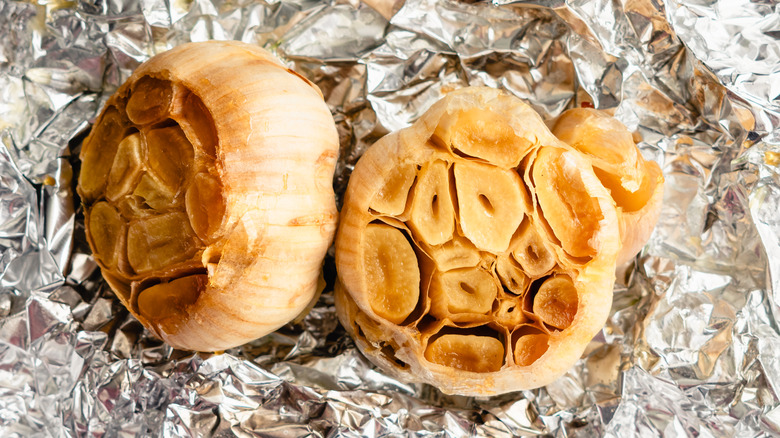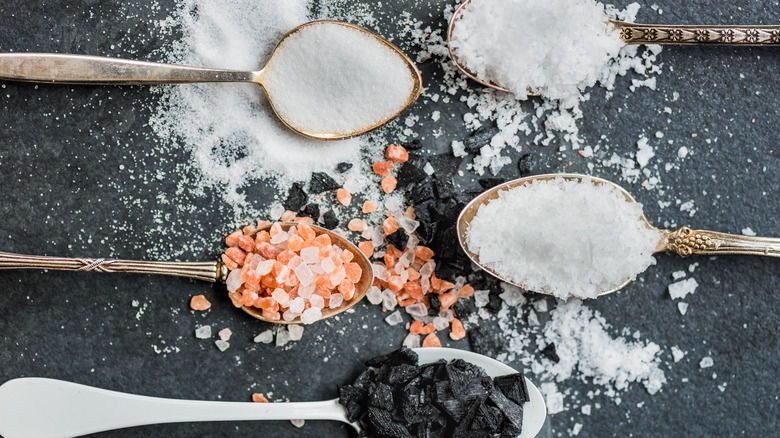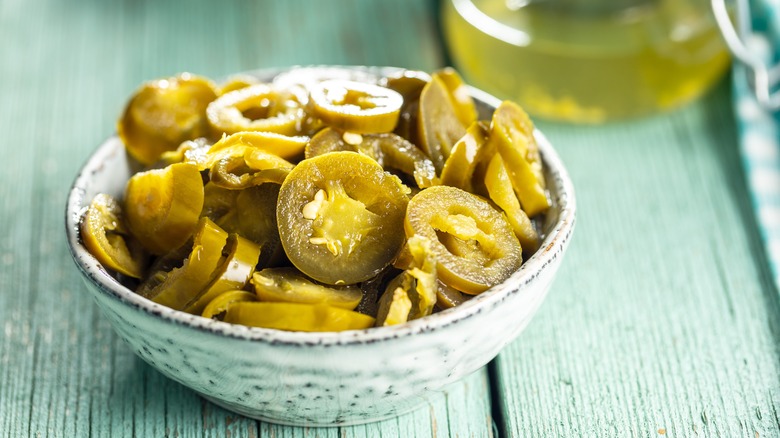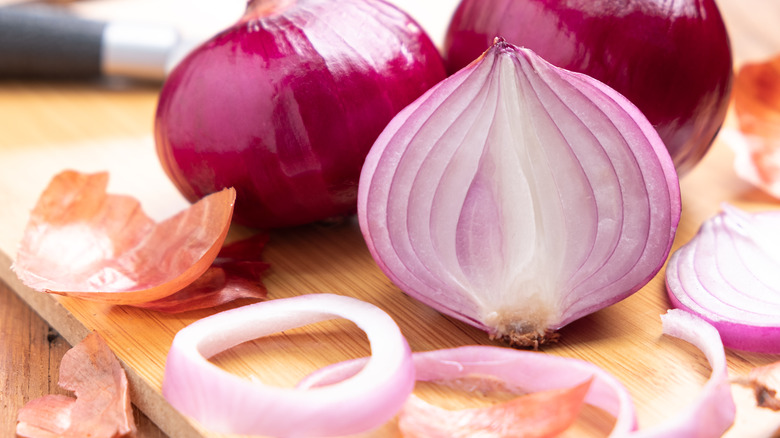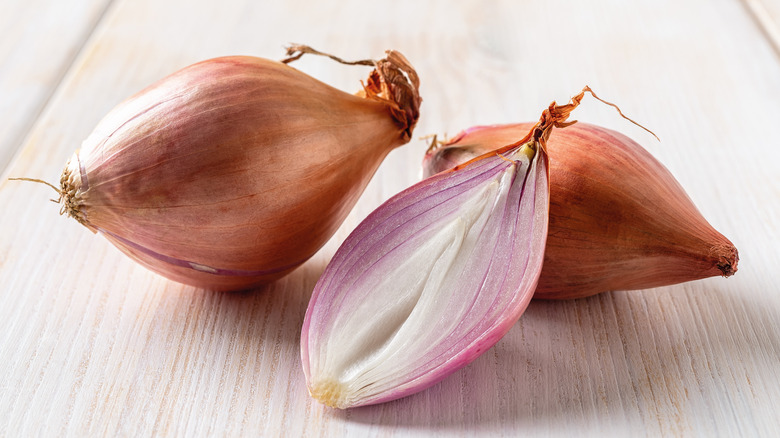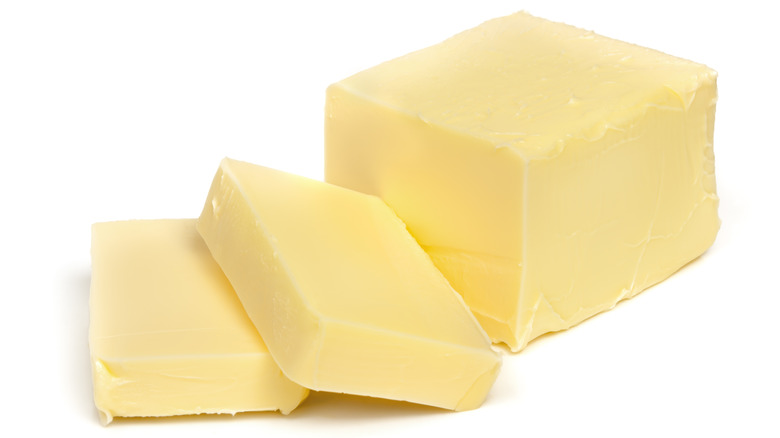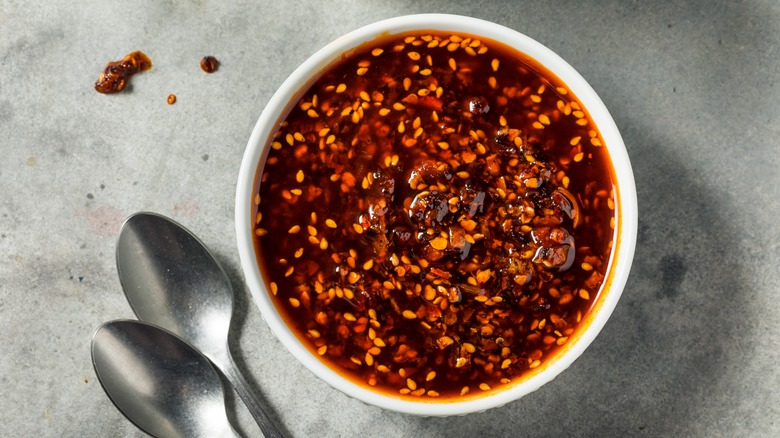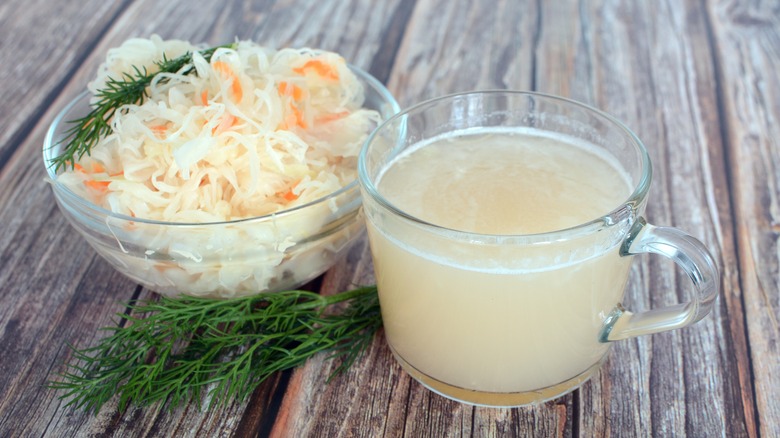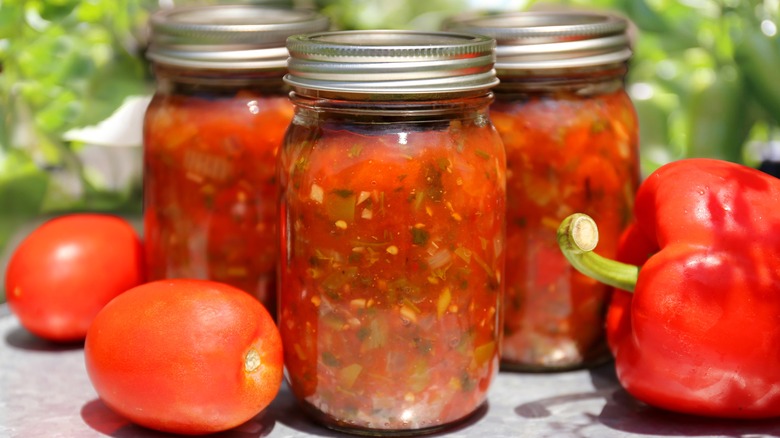12 Ingredient Swaps That Will Make Your Guacamole Superior
Basic guacamole is easy to prepare, requiring just avocado, lime, cilantro, and salt. Some chefs add extras like corn, tomatoes, and garlic, which is great. But aside from prepping your avocado ingredients like a pro, you can also turn to ingredient swaps to boost flavor and even save time. If you want to add texture, these replacements can also bring your guacamole to the next level. These are also helpful hacks to keep on hand in case you run out of your standard guac ingredients and want to get more creative with your culinary feats (or just avoid a trip to the grocery store).
Some replace standard ingredients with more flavorful or interesting upgrades, like swapping out regular tomatoes for flavorful heirloom varieties. Others boost the flavor profile by introducing new, complex ingredients, such as swapping out simple jalapeño peppers for pickled peppers or chili crisp. Others are a new spin on the dish completely, like replacing the expected lime and salt with tangy, salty sauerkraut. A few swaps help save time by streamlining ingredients or using premade options that require no prep. No matter what you swap, these replacements are sure to make your guacamole stand out from the crowd.
Heirloom tomatoes for tomatoes
Tomatoes are a common add-in, but you can switch up the flavors by choosing different varieties. Heirloom tomatoes are open pollinated varieties that are grown from seeds handed down through generations. When they pollinate, it's at the hand of the farmer or nature itself rather than mass-produced to create a consistent, although often less flavorful, tomato. All tomatoes add acid to the guacamole, which balances with the creaminess of the avocado, but heirloom tomatoes come in a variety of colors and boast slightly different flavors from your run-of-the-mill standard red tomato. Look for firm heirloom tomatoes and cut them into small pieces to get a little taste in every bite. You can remove the seeds and just use the tomato flesh if you prefer a firmer texture or include the seeds to mix them into the guac even more.
Try an heirloom tomato in an unexpected color to amp up the wow factor. They come in everything from the bright green of Aunt Ruby's German Green beefsteak variety to the deep purple of Black Krim beefsteak tomatoes. They all have slightly different flavors, which range from super sweet to smokey and rich. You can even include multiple heirloom varieties in the same batch of guac for more complexity. You can even switch up the sizes and include diced beefsteak tomatoes alongside halved grape tomatoes.
Fire-roasted corn for corn
While not a typical guacamole ingredient, corn is a great ingredient to add because it provides a hint of sweetness that complements the creamy avocado, spicy jalapeño, and tart lime. But when you swap out tender sweet corn for a cob with the fire-roasted treatment, this ingredient becomes next level. The extra bit of char adds a deeper flavor to your guac than regular corn does. It also creates more visual interest, adding unexpected colors, flavors, and textures to a simple dip. Fire-roasted corn often has some variation thanks to the roasting process, so swapping out even some of the regular corn for a fire-roasted option will make the overall flavor and texture of the guac more complex.
You can make your own or buy frozen fire-roasted corn to save time. If you're roasting corn, start with the freshest heads you can find. Remove the husks so that each kernel has a chance to come into contact with the flame. This is what creates the beautiful char on the corn. Put it on an open flame, either on the grill or over the stove, for a few seconds on each side. Turn it often to prevent it from burning. It's done when it starts to blister and turn golden brown. Once it cools to the touch, you can use a sharp knife to cut it off the cob, breaking up larger pieces as you go. Mix it into your guac and enjoy.
Infused oil for olive oil
Olive oil makes creamy guac even creamier and can also help prevent browning when spread in a thin layer on top of the guacamole before you press plastic wrap onto the top of the surface. While olive oil has a rich flavor, using a different type of oil can introduce new tastes and make your boring old guacamole recipe into something unique.
If you like the taste and texture of olive oil but want to shake things up, try an infused oil instead. Olive oil infused with lemon or lime works because the citrus pairs well with the rich avocado. If you want a subtle hint of spice, include a little bit of green chili-infused or chipotle-infused olive oil. You can find infused olive oils at specialty stores, where there are often so many varieties that the possibilities are almost endless. If you want to make your own infused oil by adding olive oil to a bottle of chili sauce or letting it rest with a collection of herbs, citrus, or other ingredients. The result is a custom blend made exactly how you want. You can also experiment with other pressed oils, including coconut oil, avocado oil, and sunflower oil, which all have different flavor profiles. Just be sure to add a few drops at a time until you get the right consistency since adding too much oil can thin out your guac.
Roasted garlic for garlic
Garlic is a standard addition to many guacamole recipes because it blends well and adds a lot of flavor. To boost it even more, throw your garlic in the oven to roast before adding it to your guac. Not only will it be more flavorful than regular garlic but it also blends better. Roasting garlic turns it into more of a paste, which you can mix into your guacamole. It also makes the flavor richer while toning down some of the harshness common with raw garlic.
Roasting garlic is simple in the oven and doesn't require any special tools. Just chop off the top of an entire head of garlic, drizzle some olive oil over the now-exposed cloves of garlic, wrap it in a foil packet, and put it in the oven. This method takes anywhere from 30 minutes to one hour, depending on the size of the garlic and your individual preference. If you want to get roasted garlic even faster, try roasting garlic in the air fryer, which uses the same steps but is done in around 15 minutes. For slow-roasted garlic, which can add even more intense flavor, a terra cotta garlic baker pot is the perfect tool, which replaces the foil with a pot to hold the chopped head of garlic. Place it into a non-preheated oven and let it come up to temperature. Then, roast for around 1 hour and 30 minutes.
Specialty salt for table salt
Salt is necessary to bring out the flavors of the guac and help them meld together so don't be skimpy with the salt when mixing up your guac. It cuts out bitterness and lets desirable flavors, like sweetness, shine through. But swapping table salt for something better will work even more magic and can add texture, depending on the coarseness of the grains of salt. Kosher salt and sea salt are both coarser and less refined than table salt. This means that they maintain other minerals that give them a more distinct flavor and have a different texture. Both work well with guacamole because the fat-rich avocados absorb a lot of salt.
Switch up your basic table salt for pink Hawaiian sea salt, Himalayan sea salt, or something completely different for a new flavor. Pink sea salts have their distinct color thanks to traces of iron in their make up and often have a more delicate taste than harsher salts. Black salt is heavy on sulphur that can give your guac an egg-like taste. Regular sea salt is a fantastic option that can be found in varieties from all around the world, each with a slightly different flavor.
Pickled jalapeño for jalapeño
Jalapeño is a must-have for guacamole and you can customize the spiciness of your dip based on the amount of pepper and seeds you mix in. Try swapping part of all of your diced jalapeño with the pickled variety. It has an extra vinegary bite when compared to regular peppers and often includes extra seasonings as well. But it maintains the spice and kick that you've come to love from this pepper.
You can make your own pickled jalapeño or find them canned at the store. You might even consider adding in some of the brine, which some consider the unsung hero of the canned pickled jalapeño experience, in place of your standard vinegar. It typically has seasonings, remnants of the peppers it pickled, as well as other ingredients like sugar and onions. You can mix in a splash with your regular diced jalapeño, swap it in for your vinegar, or go all in with both the pickled jalapeño and brine.
Red onion for diced onion
If you're used to basic white or yellow onions, try a red onion in your guac instead. They add an extra element of spiciness to the dip, which many people like, but don't bring quite the heat of peppers. Red onions also add visual interest because of their vibrant color. Even mixed into guacamole, they peek out in brilliant flashes of deep purple and bright white. Dice them raw and add them right into the mixture.
Just be sure to dine it super fine because it has a strong flavor. They are sharper and more intense than white or yellow onions. It can be helpful to wear gloves or glasses while you chop them since they create high concentrations of syn-propanethial-S-oxide, the chemical in onions that makes you cry when you cut them. Once mixed into the guacamole, however, they blend well with the flavors and add just a little kick and crunch to the dish.
Shallot for onion
If you prefer a milder allium, swap out your onions for shallots. They also display some characteristics of garlic, such as growing in the ground and a garlic-like flavor. Some consider them to have a slightly sweet taste, similar to a sweet onion. If you want to bring the flavor of alliums to your guac without the sharp, pungent taste of red, white, or yellow onions, shallots are a fantastic swap.
Just like onions, shallots can be diced and added directly to the guacamole raw. Some chefs, including Gordon Ramsay, use shallots in place of onions to leave room for other ingredients to shine. They work well for those who don't like the strong flavor of red or white onions. Unlike onions, which can be overpowering, shallots blend well with flavors from sweet corn, earthy herbs, or spicy peppers.
Butter for (some) avocado
Avocado is arguably the most vital ingredient for guacamole but you can swap out some of the fat-rich foods for other ingredients with a similar flavor profile or texture. Butter is an interesting swap that can make your guac even richer and enhance the creamy texture. Like avocado, butter is heavy on fat and works well with acids from lime, salt, and spice from jalapeño. Let it come to room temperature to make it easier to blend with the avocado and mix well. The last thing that you want is a mouthful of butter when you expect guac.
A hint of butter doesn't alter the flavor much but gives it a little something special. Just don't overdo it and replace the avocado with butter. Start with 1 tablespoon of butter per avocado and taste test often to make sure that you're getting the desired texture. At most, add 2 tablespoons of butter with each avocado that you use in your guacamole. If it starts to taste buttery and not just creamy, you'll need to balance it out with more avocado and other add-ins to bring back that extra-rich guacamole taste.
Chili crisp for jalapeño
If you like a spicier guac, swap out your jalapeño pepper for chili crisp. It has a different texture and flavor while still bringing the heat. Chili crisp is made of chilis, peppers, and seasonings, all crisped up and kept in oil. It is served as a condiment but also works well when mixed into guacamole. It takes the expected heat from chilis and combines it with sweet flavors from sugar, savory flavors from mushroom powder and other spices, and rich fats from oils to create a complex taste.
Because chili crisp is becoming the go-to condiment to put on a variety of dishes, it's appearing more often on grocery store shelves. Look for a chili crisp that lists chilis as one of the top ingredients. Most are also labeled by the intensity of the spice. When adding it to your guac, start with a small amount and mix it in thoroughly before taste testing. Increase gradually until you find the right level of spice for your dip.
Sauerkraut for lime and salt
This is an unexpected swap since guacamole hails from Mexico and sauerkraut was first developed as a fermented vegetable dish in China and later became associated with Germany thanks to its popularity in cuisine there. But the tanginess of sauerkraut hits the same flavor notes as lime, making it a perfect swap in your guac. Because it is typically salty, you don't need to add much salt to your guacamole if you opt for sauerkraut as an unexpected substitute. Plus, it imparts a new and unexpected flavor to your guac.
Depending on how long it has fermented, sauerkraut can also be a bit crunchy. This adds texture to your dip but might mean that you need to chop up the larger pieces to let them mix in well. Great guac comes with a melding of flavors, so try to avoid having large strands of veggies in your dip, which can also make it difficult to scoop it up with a tortilla chip. If you want the flavor without the crunch, swap out some of the vinegar or oil in your guac for the sauerkraut fermenting liquid instead.
Jarred salsa for tomatoes
If you're short on time, swapping out jarred salsa for fresh tomatoes is an easy fix. It brings a sweet flavor to the guac and allows you to customize the spiciness by adding more or less salsa and choosing what heat level to use. Plus, jarred salsa often keeps for over a year when unopened on the shelf so you can always have some on hand to use in salsa, even if tomatoes are not in season. Opened salsa can last up to one month in the fridge if stored properly.
Keep in mind that salsa comes in many varieties, and not all replicate the texture of fresh chopped tomatoes. Pico de gallo, or salsa fresca, is the closest swap and often includes onions, jalapeños, cilantro, and other ingredients that make nice additions to guacamole. Chunky salsa will have a similar texture when mixed into guac but not the same brightness that you'd expect from fresh tomatoes. Restaurant-style salsa is runnier than any of the other tomato options. This allows it to incorporate well into the guac, but it won't add any texture. In fact, you might want to boost your other ingredients if adding restaurant-style salsa since it can make your dip too runny. You can find plenty of options with extra flavor as well, such as fruity salsa, extra hot salsa, or even salsa with corn or black beans mixed in.
